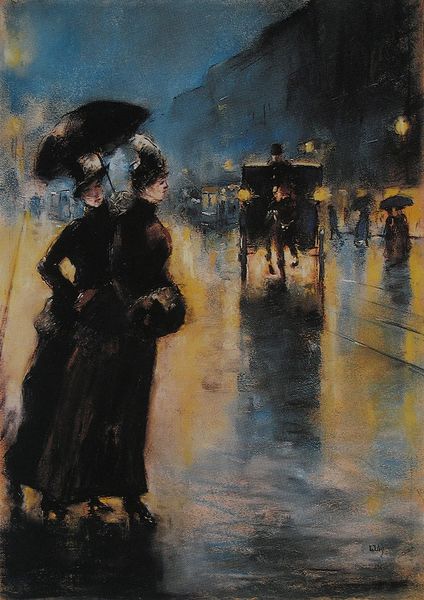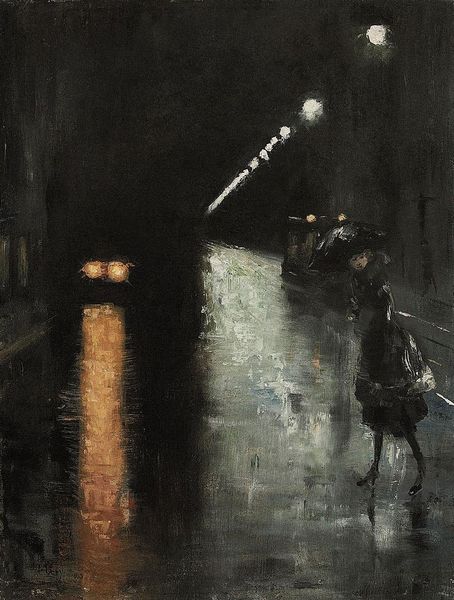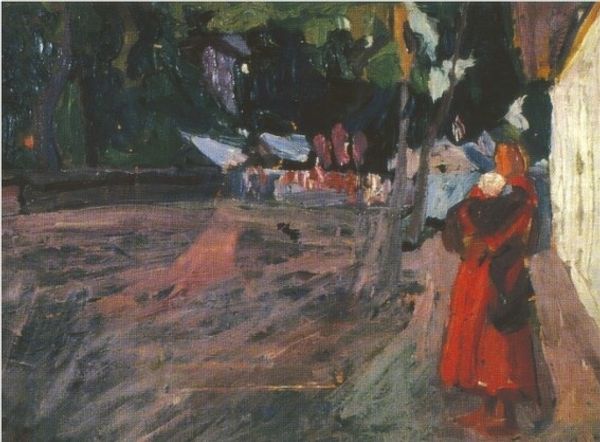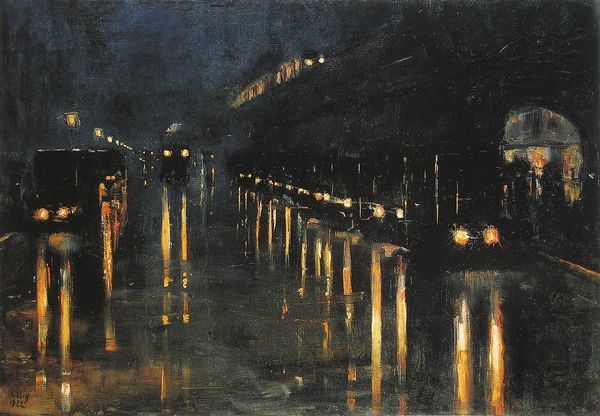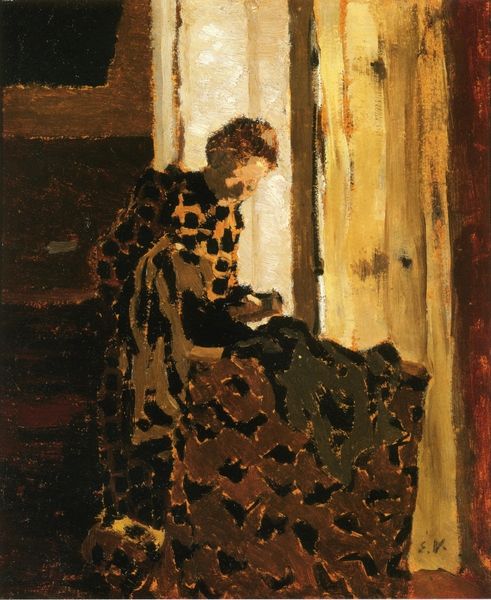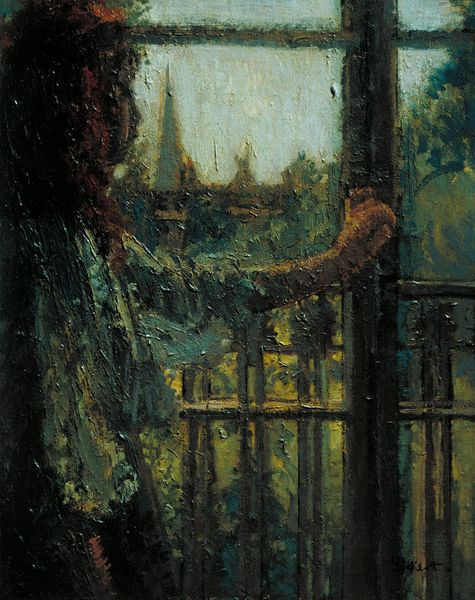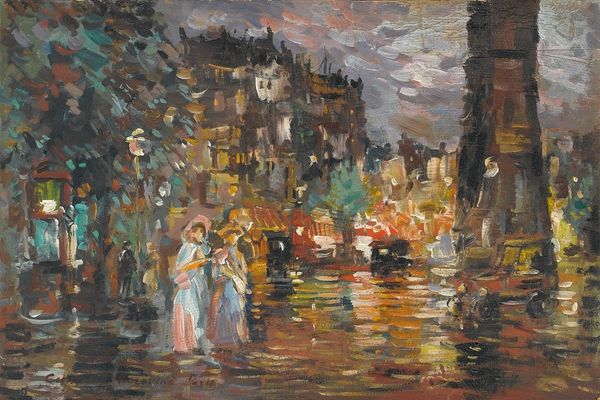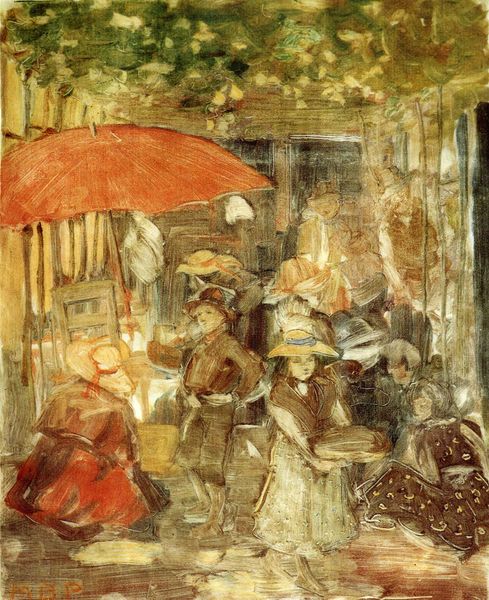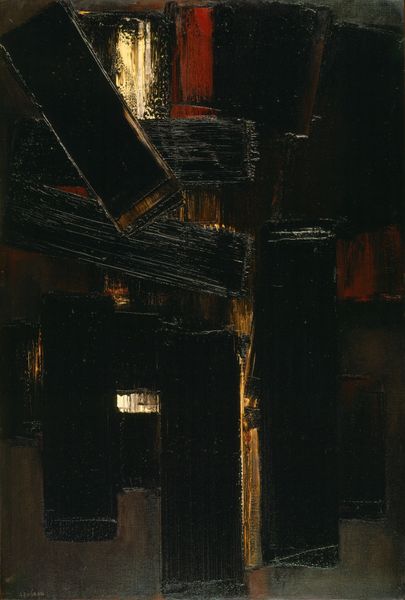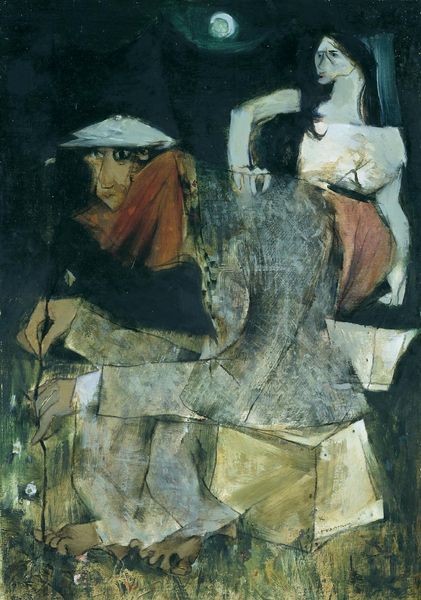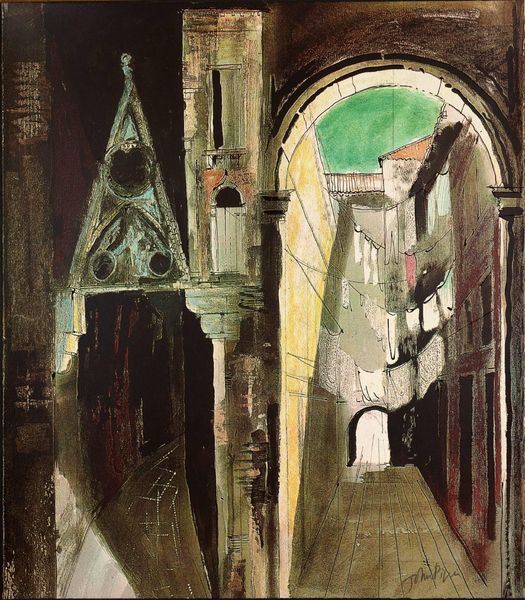
#
abstract expressionism
#
abstract painting
#
impressionist landscape
#
possibly oil pastel
#
oil painting
#
fluid art
#
neo expressionist
#
acrylic on canvas
#
paint stroke
#
expressionist
Copyright: Public domain
Lesser Ury’s “Leipziger Strasse” uses oil paint to capture a street scene in Berlin, likely during the late 19th or early 20th century. Oil paint, known for its versatility, allows Ury to play with light and texture, creating a hazy, wet atmosphere. The painting’s surface is built up with layers, each stroke contributing to the overall impression of a bustling city street at night. Notice the reflections on the wet pavement, achieved through the careful application of thin, transparent glazes. The visible brushwork gives the painting an immediacy, as if Ury captured the scene in a fleeting moment. This directness is a hallmark of Impressionism, a movement that valued the artist’s personal experience and sensory impressions. The way the paint is applied—thickly in some areas, thinly in others—adds a tactile dimension to the work. In this way, Ury brings together the material qualities of oil paint with a vision of modern urban life.
Comments
No comments
Be the first to comment and join the conversation on the ultimate creative platform.
